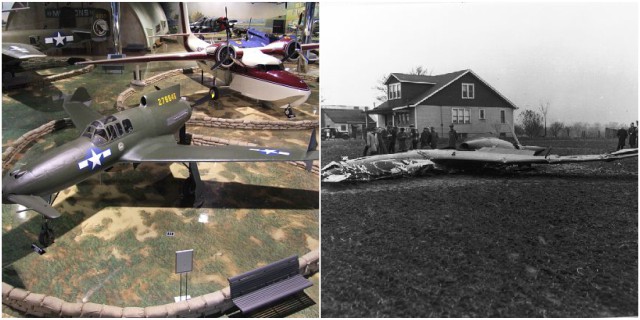On November 27, 1939, the United States Army Air Corps issued a requirement for unconventional aircraft designs.
The requirements of Proposal R-40C, issued by the United States Army Air Corps were ‘to be created a fighter outperforming all existing models in speed, in the rate of climb, maneuverability, armament, pilot visibility, and also an unconventional aerodynamic configuration. In addition, the fighter was required to have a low initial cost and had to be easy and inexpensive to maintain.
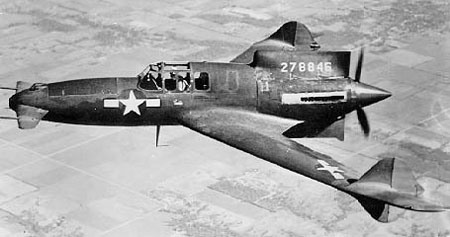
The Curtiss-Wright XP-55 Ascender prototype interceptor fighter built by the Curtis – Wright company was the answer to these requirements issued by the United States Army Air Corps. The Curtiss XP-55 Ascender is perhaps best known of the three pusher fighters (the others being the Vultee XP-54 and Northrop XP-56).
The tail-first Curtiss XP-55 was certainly highly unusual design for its time, it had a canard configuration, a rear mounted engine, swept wings and two vertical tails.
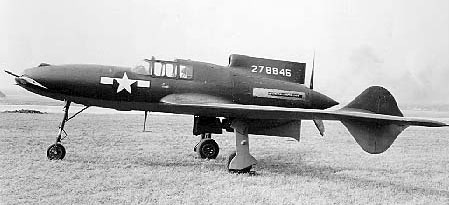
At first, the XP-55 used an experimental Pratt & Whitney X-1800 engine, but the engine project was cancelled, and because of that it used a more conventional Allison V-1710 engine being used for the first time as a pusher. It was a V-type, liquid-cooled engine, which produced a takeoff power of 1,275 hp.
On July 13, 1943, the first XP-55 was completed and performed its first flight on July 19, 1943, at Scott Field Air Force Base, not far from the Curtiss-Wright factory in St. Louis.
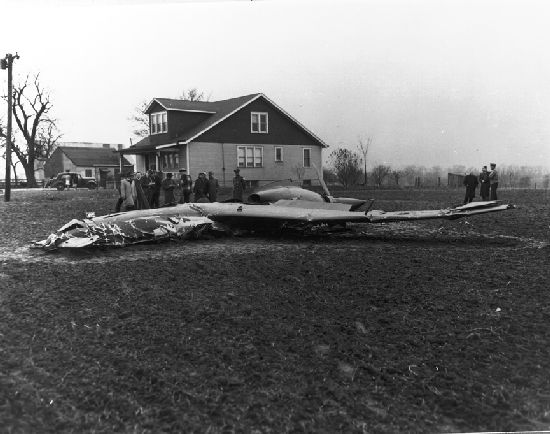
The first flight showed that the aircraft experienced stability problems and that the takeoff run was excessively long. Now they had to increase the size of the nose elevator to about fifteen percent for subsequent flights and to interconnect the aileron up trim with the flaps.
During stall tests on November 15, 1943, the XP-55 flipped onto its back. The engine quit and nothing the pilot did could break the stall. After a perfectly stable fall of 16,000 feet, the pilot, J. Harvey Gray, bailed out safely. The XP-55 was destroyed during this spin tests at St Louis. Now it was necessary to correct the design.
On January 9, 1944, the second XP-55 was flown in St Louis. It was similar to the first but the elevator tab systems were modified, and it also had a larger nose elevator.
The third XP-55 was improved in its stall characteristics by the addition of four-foot wingtip extensions, and by increasing the limits of the nose elevator travel. It flew for the first time on 25 April 1944.
The trials indicated that the XP-55 at low speeds and during landings the aircraft was very unstable. The pilot, Russ Schleeh, commented that it was terribly unstable and that if you took your eyes off the horizon for a moment, even in the landing pattern, the plane would drift wildly off course.
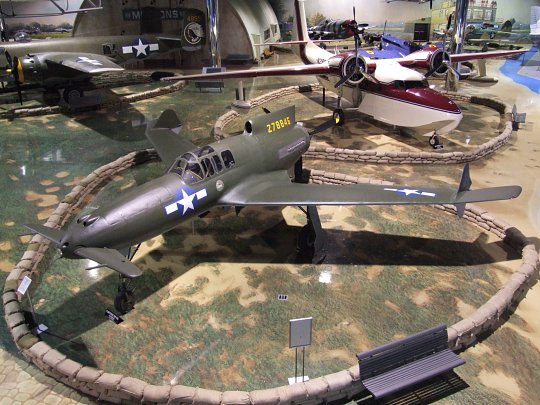
XP-55 was often inferior to that of more conventional fighter aircraft, having a top speed of 390 mph at 19,300 feet. Service ceiling was 34,600 feet, and it could reach 20,000 feet in 7.1 minutes.
The third prototype survived the testing program but was destroyed in an accident on May 27, 1945, at Wright Field, Ohio. Not only was the aircraft destroyed but the pilot was killed as well as a passing motorist.
Although XP-55 failed to reach production it contributed a lot to advancing technology. An example of the XP-55 Ascender has been preserved by the Smithsonian Institution for display in the National Aerospace Museum.
